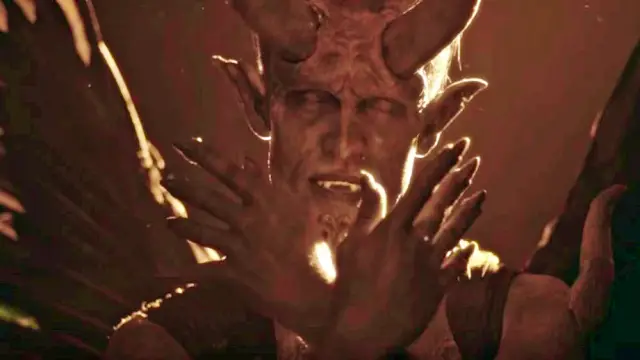The Satanic Temple has often been surrounded by controversy, much of it stemming from conspiracy theories and historical parallels. However, beneath the sensational headlines lies a tangled web of documented programs, alleged practices, and unsettling coincidences. Connections between mind control, child abuse, and Satanic rituals have long been debated. Let’s delve into the connections between The Satanic Temple, MKULTRA, and cultural influences, while separating fact from fiction.
What is The Satanic Temple?
The Satanic Temple (TST) is a nontheistic religious group known for its advocacy of secularism, free speech, and separation of church and state. While it may seem like a provocative but harmless organization, critics highlight its unsettling fascination with occult symbolism and themes involving children.
MKULTRA: A Dark Chapter in History
MKULTRA was a covert CIA program that ran from the 1950s to the early 1970s. Its purpose was to explore mind control techniques through drugs, psychological manipulation, and abuse. Thousands of individuals, including children, were allegedly subjected to these experiments without their consent.
Key Facts About MKULTRA:
- Origins: Started during the Cold War to counter perceived Soviet advances in psychological warfare.
- Techniques: Used LSD, hypnosis, sensory deprivation, and electroshock therapy.
- Victims: Included marginalized groups like orphans, prisoners, and psychiatric patients.
- Endgame: The program officially ended in 1973, but its impact lingers in public consciousness.
MKOFTEN: The Occult Connection
Building on MKULTRA, MKOFTEN explored the use of occult practices and paranormal phenomena for psychological warfare. Documents suggest it aimed to weaponize the occult, further blurring the line between fiction and reality.
Notable Allegations:
- MKOFTEN reportedly experimented on children, exposing them to horror imagery as part of trauma conditioning.
- Cultural references, such as George Romero’s Night of the Living Dead (1968), are believed to have been used as test material.
- This program hints at the government’s interest in occult symbolism and its potential psychological effects.
“LA Devotee”: Panic! at the Disco’s Controversial Music Video
The music video for LA Devotee by Panic! at the Disco has sparked heated debates due to its disturbing imagery and apparent references to occult themes. Featuring Noah Schnapp (known for Stranger Things), the video raises questions about modern entertainment’s glorification of dark themes.
Key Moments in the Video:
- Abduction and Brainwashing: A young girl is kidnapped and shown in a dazed, cult-like state.
- Electroshock Scene: A boy is tortured with electrodes, reminiscent of MKULTRA’s experiments.
- Ritualistic Imagery: Symbols like Baphomet’s head and scenes of animal sacrifice dominate the video.
Analysis:
Critics argue the video’s aesthetic mirrors MKULTRA’s documented methods, including trauma-based mind control. The use of cultists and ritualistic themes connects it to broader occult narratives.
Pop Culture and Conditioning
Modern entertainment often flirts with dark, occult imagery, but where does it come from? Some argue these themes desensitize audiences, especially younger viewers, to violence and ritualistic symbolism.
Notable Examples:
- This is Gospel (2013): Panic! at the Disco’s video shows Brendon Urie in a hospital setting, fighting restraints, and symbolically leaving his Mormon roots.
- Emperor’s New Clothes (2015): Urie transforms into a demon, shedding his former self. The narrative’s progression to LA Devotee suggests a deliberate arc of darkness.
- Subliminal Messaging: Symbols like pentagrams, Baphomet, and ritualistic attire appear frequently in music videos, often with little context.
Real-World Parallels
The timing of certain events raises further concerns. For instance, just days after LA Devotee gained traction, horrifying incidents of torture streamed on social media hit the news. Critics draw parallels between these real-life events and the conditioning seen in media.
Case Study: Esteban Santiago
In 2017, Esteban Santiago opened fire in a Florida airport. He later claimed the government was controlling his mind, forcing him to watch extremist videos. Santiago’s mental state and experiences echo the trauma reported by MKULTRA survivors.
Feminism and Occultism: A Curious Intersection
Recent feminist art and rhetoric have also embraced occult themes. While some view this as empowering, others see it as troubling. For example, a photography exhibit in London celebrated “sociopathic or evil women” as a symbol of power.
Key Quote:
“The occult allows women to embrace their darker sides…It’s important to accept there are evil, nasty women in the world who aren’t that perfect version of femininity.”
Criticism:
This shift in feminist rhetoric ties into larger cultural trends, where morality becomes secondary to the pursuit of power.
Who’s Pulling the Strings?
The recurring use of occult imagery, mind control themes, and ritualistic violence in media isn’t mere coincidence. These ideas are being deliberately injected into mainstream culture. The question remains: why?
Possible Motives:
- Cultural Manipulation: Desensitizing audiences to violence and control.
- Power Structures: Reinforcing certain ideologies through repeated symbolism.
- Entertainment Shock Value: Pushing boundaries for profit and attention.
Conclusion
From The Satanic Temple to MKULTRA’s lingering influence, the intersections of mind control, occultism, and pop culture present a disturbing picture. While skepticism is healthy, ignoring patterns and connections outright risks overlooking critical insights.
Whether intentional or coincidental, the glorification of dark themes and the desensitization of audiences to ritualistic imagery warrant closer scrutiny. In a world where fact and fiction increasingly blur, understanding the forces shaping our culture has never been more important.

